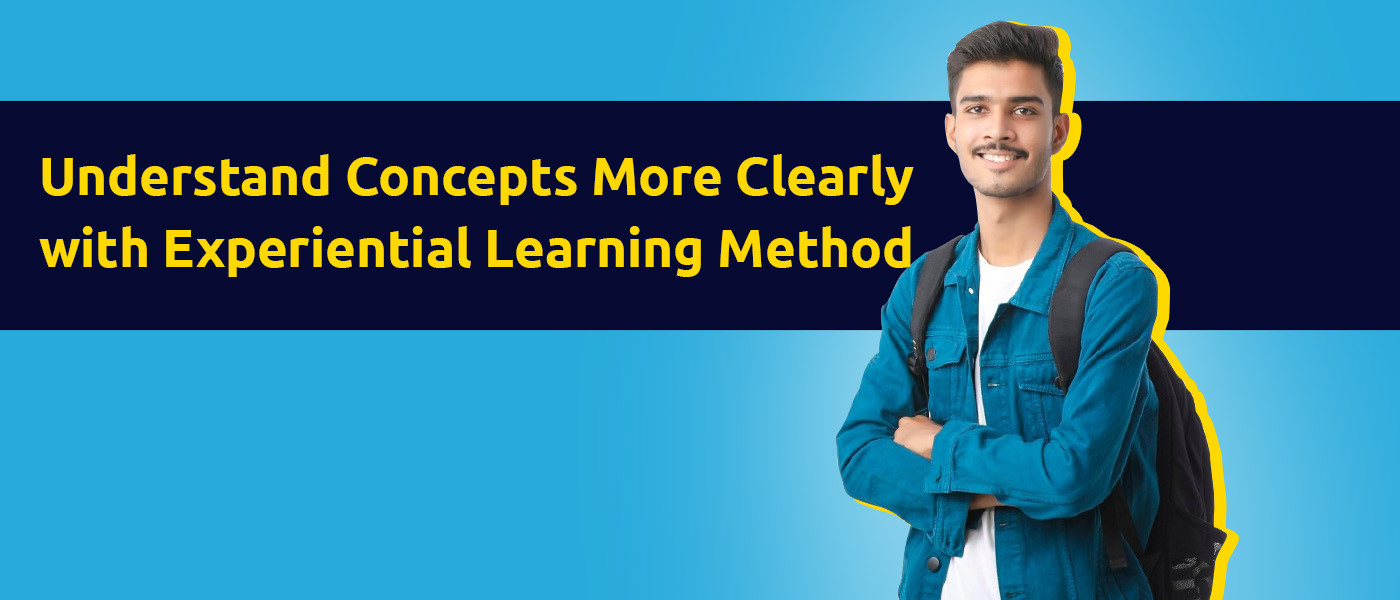
Blogs for Students
Understand Concepts More Clearly with Experiential Learning Method
I hear and I forget, I see and I remember, I do and I understand….this quote well describes that work done is better than thought. Experiential learning is based on the same concept and base. Learning by doing things practically is one of the most effective methods. Topics carried out in experiments are grasped by students.
Experiential learning is an engaging foundation that describes the absolute learning process and engages you to understand yourself as a learner and practitioner. It gives the freedom to take charge of your own ideology and development. The way you are approachable to life, solving problems and making decisions are the objectives.
The experiential learning cycle of David Kolb is one of the powerful learning approaches. The cycle consists of four stages, namely experience - reflect - think - act. Experience refers to the execution of an experiment, reflection refers to the outcomes and perspectives, thinking to reach concepts, and then acting to make decisions. This cycle is so effortless that people are engaged in it without being aware.

What are the measures to adapt experiential learning?
Learning style is a framework that makes enlightenment of your inheriting tendencies to foster interactions, teamwork, and managerial relationships. People develop a preference for learning styles on the basis of personality, education specialization, career, and culture. The learning process has 9 steps -
Experiencing - One gets involved, engaged, and instinctual and understands the importance of teamwork when carrying out a process.
Imagining - A person becomes creative, empathetic, and confiding by imagining new ideas and creating visions.
Reflecting - With this style, a sense of listening and then viewing issues from many viewpoints.
Analyzing- When using this style, analysis, and structuring of data is corporated in learning.
Thinking - One gets to know the communication style and usage of qualitative tools to analyze problems.
Deciding - It enhances the quality of commitment and helps you find solutions for issues.
Acting - Action is the most crucial step to complete a task. It describes the implementation of goals with the use of finite resources.
Initiating - This style describes the quality of seizing opportunities and participating.
Balancing - It helps in understanding the weak points of a situation and the differences between people.

Teacher's role for implementation -
The instructor should be less authority-centric and should try to build up a positive, non-dominating way. He should identify the children's capabilities and should set the experiments as required.
One way to make this possible is through one-to-one tuition personalized classes that enables tutors to pay individual attention to students. Furthermore, it will help students to openly share their thoughts and resolve their doubts without any hesitation. Sharing of thoughts and delivering the importance of the experience should be the foremost objective.
Relative resources must be provided to students in order to come across the solutions on their own.
Student's role in experiential learning-
The problems involved should be practical, social and distinctive. They should be involved in difficult situations to make them progressive and self-evaluating. Students should be provided the freedom to execute the experiments to make headways in the learning process and become prone to innovations.
Thus, learning by doing inculcates better communication skills and decision making in students to back lift every difficulty. Students who learn through themselves become competent and self dependent which reinforces their foundation to purposive career and success.
